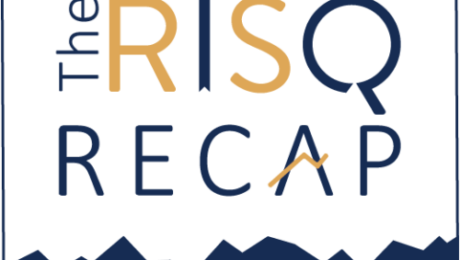Extended Detection and Response Explained
This article is from RISQ Consulting’s Zywave client portal, a resource available to all RISQ Consulting clients. Please contact your Benefits Consultant or Account Executive for more information or for help setting up your own login.

Extended detection and response (XDR) is a security solution that offers organizations end-to-end visibility, detection, investigation and response across multiple security layers. Unlike endpoint detection and response (EDR), XDR provides a holistic view of threats across the entire technology landscape rather than only those within managed endpoints. This article explains what XDR is and how it works, outlines the benefits of XDR and discusses how it compares to EDR.
What Is XDR and How Does It Work?
XDR uses data collected across multiple security layers to provide IT and security teams with real-time, actionable threat information. By utilizing extended visibility, analysis and response across endpoints, workloads, users and networks, XDR can help organizations reduce blind spots, detect threats faster and jump-start threat remediation. Essentially, XDR helps security teams:
- Recognize advanced and hidden threats
- Detect and follow threats in and across various systems
- Improve the time it takes to detect and respond to threats
- Improve the threat investigation process
There are several components of XDR that provide organizations with a wider grasp of threats via the following:
- An analysis of internal and external traffic—XDR can identify cybersecurity threats even after they’ve bypassed system perimeters.
- Integrated threat intelligence—XDR learns from attacks on other systems to detect similar events in its own environment.
- Machine learning-based detection—XDR can detect zero-day and nontraditional threats that bypass signature-based methods.
The Benefits of XDR
XDR adds value to organizations by combining multiple security offerings into one incident detection and response product. Benefits of XDR include:
- Greater visibility and context—Threats that utilize legitimate software, ports and protocols can often slip past system defenses undetected. With XDR, security analysts can see threats on any security layer. It can also offer insights into how an attack happened, who was affected and how it spread.
- Improved prioritization—As cyberthreats become increasingly frequent, it can be difficult for IT and security teams to keep up with security alerts. XDR can help prioritize threats by grouping related alerts across the framework and presenting the most important ones.
- Enhanced automation—XDR’s automation abilities allow IT teams to handle a large volume of data and consistently execute complex processes.
- Faster detection and response—Since XDR is continuously monitoring the technology landscape, it enables organizations to detect and respond to threats faster than before.
- More sophisticated responses—XDR can tailor specific systematic responses and leverage other control points to minimize the overall impact of the affected endpoint.
How Does XDR Compare to EDR?
XDR is an evolution of EDR—a cybersecurity solution that continuously monitors security-related threat information and endpoint data to detect and respond to ransomware and other types of malware. However, EDR can only detect and respond to threats inside managed endpoints, which limits the scope of threats that can be detected. In contrast, XDR goes beyond the capabilities of EDR by analyzing all security layers and offering organizations a more holistic view of threats.
Conclusion
In an increasingly complex threat landscape, XDR solutions can provide organizations with flexible and efficient security enforcement and remediation. For more risk management guidance, contact us today.
- Published in Blog
Health Panel Calls for Routine Anxiety Screening for Adults
This article is from RISQ Consulting’s Zywave client portal, a resource available to all RISQ Consulting clients. Please contact your Benefits Consultant or Account Executive for more information or for help setting up your own login.

The U.S. Preventive Services Task Force (Task Force) recommends that adults under the age of 65 get regularly screened for anxiety. The draft recommendation applies to adults 19 and older who don’t have a diagnosed mental health disorder. It’s meant to help primary care clinicians identify early signs of anxiety, which can go undetected for years. This is the first time the Task Force has recommended anxiety screening in adult primary care without symptoms.
The Task Force, a group of independent disease prevention and medical experts, defines anxiety disorders as “characterized by greater duration or intensity of a stress response over everyday events.” Recognized types include generalized anxiety disorder, social anxiety disorder and agoraphobia.
The draft recommendation noted that the lifetime prevalence of anxiety disorders in adults in the United States is 40.4% for women and 26.4% for men. The recommendation was prioritized due to anxiety’s public health influence and the country’s increased focus on mental health in recent years.
“Our hope is that by raising awareness of these issues and having recommendations for clinicians, that we’ll be able to help all adults in the United States, including those who experience disparities.”
-Lori Pbert, Task Force member
The guidance stops short of recommending anxiety screening for people 65 and older since many common symptoms of aging—such as trouble sleeping, pain and fatigue—can also be symptoms of anxiety. The Task Force said there wasn’t enough evidence to determine the accuracy of screening tools in older adults to distinguish between anxiety symptoms and conditions of aging.
The Task Force advised clinicians to use their judgment in discussing anxiety with older patients. It also reiterated an earlier recommendation that adults of all ages undergo routine screening for depression.
What’s Next?
The proposed recommendation is not final and is in a public comment period through Oct. 17. This is an opportunity for the public to provide their input and perspectives for the Task Force to consider for its final approval.
The Task Force emphasizes that if you already show signs or symptoms of anxiety, you should be assessed and connected to care. Anxiety screening tools, including questionnaires and scales, have been developed and are available in primary care. If you have concerns about anxiety, contact your doctor.
- Published in Blog
Engaging Employees With an Organizational Mission
This article is from RISQ Consulting’s Zywave client portal, a resource available to all RISQ Consulting clients. Please contact your Benefits Consultant or Account Executive for more information or for help setting up your own login.

Organizations thrive through a sense of belonging and shared purpose. As employers navigate on-site, hybrid and remote work models, many may worry that those critical success factors could get lost in the workplace. Luckily, there are still ways for employers to promote their organizational mission with all employees, regardless of location. In times when employers may struggle to find and keep the workers they need, a strong and authentic organizational mission can help attract and retain top talent. Workers are more likely to be engaged and loyal to organizations with a mission they believe in and trust.
This article explores opportunities for employers to engage and unite their employees in both on-site and distributed workplaces.
A Mission Everyone Believes
According to Indeed.com, an organizational mission—or a mission statement—is a brief, broad statement about a company’s goals and how it intends to meet them. It can address what the organization offers and how it hopes to serve its customers, community, employees, investors or other key stakeholders. Strong missions develop a human connection or an idea or behavior that employees can get behind and truly believe.
Cultural values are a way for the organization to achieve its mission. They define employee behavioral expectations and explain how leadership expects employees to work. Ultimately, everyone is working toward the same goal and demonstrating the values and behaviors aligned with and expected from the organization.
Connecting with Employees
It’s much easier to implement an employee engagement plan with a solid understanding of the organizational mission. Employers should consider the following tips to promote an organizational mission while keeping all employees engaged and firmly believing in the company:
- Involve employees early. The sooner organizations get the mission in front of employees, the sooner employees see how their role impacts the mission. The organizational mission and other company information are critical components of the onboarding process. This step reinforces that employees’ work does matter.
- Celebrate and communicate wins. Whether big or small, celebrating any organizational success that upholds the mission and delivers value to stakeholders not only reminds employees about how performance is measured, but demonstrates that those actions are important and truly make a difference.
- Reward behaviors that support company goals. Recognizing and rewarding employees who contribute to the progress and achievement of company goals is crucial. For example, encourage employees to share insight about what the mission means to them and how they live it. This can help provide concrete examples for other employees and demonstrate that the organization truly believes in and strives for that behavior or mindset. Recognition in a public format ensures that all employees are aware of the star behavior, which now comes to life in the workday.
- Foster belonging in the workplace. Many factors can contribute to employees’ sense of belonging in the workplace; however, a critical element revolves around whether employees are proud of their employer’s mission or purpose. When aligned with the mission, employees are often proud of their work and the organization.
- Continue organizational traditions. Everything that once drove formal and informal culture in the physical workplace needs to be reformatted to ensure inclusivity and connection between the physical and virtual workforces. This includes team-building activities, wellness initiatives, milestone celebrations and companywide events that allow employees to preserve or strengthen social attachments.
- Establish informal and formal engagement opportunities. Employers can encourage team leaders to create formal stand-up or check-in meetings to keep the team regularly connected. It’s equally important to support informal opportunities such as mentorship, walking meetings and coffee breaks. It’s all about encouraging and, to a certain extent, facilitating communication among employees.
- Drive employees to an intranet or other shared platform. It’s critical that all employees have access to the latest company happenings. For example, a company intranet can become a one-stop destination for employees to get to know each other and communicate. When there’s a designated destination for all updates, all employees receive the same information at the same time, and there’s no advantage of being on-site or remote. Additionally, communication apps and channels can serve as engaging employee channels and provide a shared platform for employees to stay in touch.
Lastly, employers should be intentional about communication by ensuring there’s a communication plan in place or, at a minimum, establishing guidelines about how the organization communicates and how frequently. Communication formats and other employee preferences should be taken into consideration to make sure organizational information and updates resonate with and engage the entire workforce.
If working situations have changed, it may be helpful for employers to ask employees about current challenges and opportunities for living out company values, whether formally through a survey or informally during department meetings. A baseline survey can help organizations identify disparities between the company’s mission and values and how employees actually feel about the company and workplace, and ultimately address such issues.
Summary
In a distributed work environment, the in-person work culture typically dominates, which could isolate employees working remotely full- or part-time. That means it’s imperative for employers to prioritize employee engagement in workplace strategies. Contact us today for more information on distributed workplace strategy and management.
- Published in Blog
The Grinch Had the Right Idea
By Jennifer Outcelt, Creative Content Architect
My husband has an extreme aversion to the gift giving gambit of the holiday season. He’s by no means a Grinch when it comes to the decorations, feasts, time with loved ones, magic of Santa for our daughter, or general joy that the holidays can bring. Yet the capitalist consumer driven aspects of rearranging money into stacks of useless stuff to shove under a tree leaves him wanting… well, less.
To him, finding presents for the people he loves (and some he just likes) is the same feeling as John Travolta trying to find the intercom system in Pulp Fiction. Confusing, awkward, and unnecessary.

A few years back he requested a gift-less year. My poor indoctrinated brain could barely comprehend the concept, so I put up a bit of a fight. Eventually, we compromised and decided to condense our Christmas gifting to a singular special gift for each of us. At the time, our daughter was too young to understand Christmas and so we only got her a few essentials as well.
Much to my surprise, it felt better to get the one gift than it had in previous years getting a bunch of smaller gifts. Even more to my surprise, was how exciting if felt knowing that I had found just one awesome gift for my husband that he would love. In fact, that one gift is now considered the best gift he ever received and is talked about (and used) daily. Oddly, I don’t actually remember what gift I received… but I do remember having a wonderful, joyful, and playful Christmas. And I think those memories are more important.
Ever since, I have been looking at Christmas through a newly defrosted lens. We have continued the one gift rule between us and it has saved us stress, money, and time. We are now focused on the decorations, the food, the games, and the merriment of the family. After all, I’m an adult with a big girl job, and if I really want something, I can go buy it.
This attitude has even trickled down to other gift giving events. We have asked for experiences in lieu of toys at our daughter’s birthday. Now we have an amazing membership to the Anchorage Museum and can visit anytime we want to have a fun and active day out of the house. WAY better than a voice changing, battery operated, megaphone. Well… at least in my opinion.
The point is, that once we decided that material gifts should be limited or absent, the time we spent together became the goal and the reward. I found a cool article that dives into the money side of the holiday spending. I thought it complemented our recent gifting changes nicely and might offer you a new perspective on how to allocate your holiday funds.
https://moneywise.com/managing-money/budgeting/heres-why-you-should-stop-buying-christmas-presents
- Published in Blog
The RISQ RECAP:
December 19th – December 23rd, 2022
Each week, you’ll find specially curated news articles to keep you up to date on the ever-evolving world of insurance and risk management. The articles are divided out between items relevant to Property & Casualty, Employee Benefits/Human Resources, and Compliance. We’ve included brief summaries of each item as well as a link to the original articles.

PROPERTY & CASUALTY
Customer Satisfaction With Digital Claims Declines Again: J.D. Power
“Customer satisfaction with insurers’ digital claims systems declined for the second consecutive year, according to a J.D. Power survey of auto and home policyholders. Mark Garrett, director of P/C insurance intelligence for the consumer research company, said that challenges such as rising repair costs and supply chain disruptions are driving longer claims cycle times. ” Full Article
– Insurance Journal

EMPLOYEE BENEFITS, HUMAN RESOURCES, & COMPLIANCE
Several New Group Health Plan Reporting Deadlines are Approaching “To review all of the major CAA and transparency in coverage (TiC) requirements, you can access a checklist for plan sponsors here and a checklist for plan service providers here. This article summarizes the new CAA and TiC reporting requirements with deadlines that are soon approaching.” Full Article – Foley & Lardner LLP
First Circuit Creates New Fiduciary Duty Under ERISA for Insurers Accepting Group Premiums from Employers “Due to a circuit split, Employers in the 1st, 4th and 8th Circuits should check their benefit plans’ terms to determine who is responsible for enrollment duties and eligibility verification, including determining when to accept premiums from employees.” Full Article – Littler
IRS Finalizes Regs Permanently Extending Deadlines for Furnishing ACA Statements to Individuals “The regulations permanently extend the deadline for furnishing a given year’s Forms 1095-B and 1095-C to individuals until 30 days after January 31 of the immediately following year (or the next business day, if the 30th day falls on a Saturday, Sunday, or legal holiday).” Full Article – Thomson Reuters/ EBIA
Senators Murray, Baldwin Introduce Reproductive Health Travel Fund Act “The Reproductive Health Travel Fund Act would set up a grant program, authorized at $350 million per year for FY23 through FY27. The bill would allow the Treasury Secretary to award grants to eligible entities to pay for travel-related expenses and logistical support for individuals accessing abortion services.” Full Article – Committee on Health, Education, Labor and Pensions, U.S. Senate
When Cash Is Not King: Holiday Gifts as Nontaxable ‘De Minimis’ Fringe Benefits “This post highlights the tax consequences of employer-sponsored holiday perks such as gift cards, turkeys, hams and gift baskets. Under the current tax rules, employers may give infrequent low value gifts of property or services to employees on a tax-free basis. To qualify as a tax-free de minimis fringe benefit, a gift from an employer must be of nominal value, infrequent, and not similar to cash.” Full Article – Verrill Dana LLP
Implementing the Family Glitch Fix on ACA Marketplaces “The Biden administration’s new rule, effective for the 2023 plan year, gives dependents with an offer of unaffordable employer-based family coverage access to marketplace subsidies. But a successful family glitch fix will require marketplaces to implement new infrastructure, conduct significant outreach, and ensure consumers have sufficient enrollment assistance and ample time to sign up for more affordable coverage.” Full Article – The Commonwealth Fund

STATE & INTERNATIONAL COMPLIANCE
In addition to the RISQ Review, RISQ Consulting also provides a resource that features changes and updates to State and International Compliance measures. We’ve included brief summaries of each item below, and also provided links to the original articles if you’d like to read further.
CALIFORNIA
Who is A “Designated Person?” Changes to California’s Medical Leave
“The Expansion of California Family Rights Act, AB 1041, was signed into law by Governor Newsom on September 29, 2022. AB 1041 expands the class of people for whom an employee may take leave to care for under the California Family Rights Act (“CFRA”) to include a “designated person.” Full Article
– Sheppard Mullin LLP
NEW YORK
New York Bars Discipline for Legally Protected Employee Absences
“On November 21, 2022, New York Governor Kathy Hochul signed a law clarifying that it is unlawful for an employer to penalize an employee for any absence protected under federal, state or local law. (S.1958/A.8092). The law goes into effect on February 19, 2023.” Full Article
– Jackson Lewis P.C.
COLORADO
New Guidance on Bonuses and Commissions May Cause Headaches for Employers
“Organizations commonly require employees to be employed on the date a commission or bonus is paid to receive the commission or bonus. The Colorado Department of Labor and Employment (CDLE), which interprets and administers Colorado’s Wage Act, recently indicated that practice is not permissible, which means employers will need to revisit their bonus agreements and commission plans sooner rather than later.” Full Article
– Holland & Hart LLP
ILLINOIS
Illinois Appellate Court Holds Businesses Must Implement Biometric Retention and Destruction Policies Before Collecting Biometric Data
“On November 30, 2022, the Illinois Second District Appellate Court reversed the trial court’s grant of summary judgment in Defendant’s favor in a case entitled Mora v. J&M Plating, Inc.” Full Article
– Seyfarth Shaw LLP
WASHINGTON
Washington State’s Pay Transparency Law Takes Effect January 1, 2023
“SB 5761 amends Washington’s Equal Pay and Opportunity Act (RCW 49.58) to require employers with 15 or more employees to include in each job posting the wage scale or salary range of the job and a general description of all of the benefits offered and to identify other compensation offered.” Full Article
– McDermott Will & Emery LLP
- Published in Blog
No Holidays for Hackers: Higher Revenue Losses for Non-weekday Cyber Events
This article is from RISQ Consulting’s Zywave client portal, a resource available to all RISQ Consulting clients. Please contact your Benefits Consultant or Account Executive for more information or for help setting up your own login.

Ransomware events that occur on holidays and weekends cause much higher revenue losses than cyber incidents occurring on weekdays—primarily due to lower staffing levels—according to a survey of over 1,200 cybersecurity professionals.
Security firm Cybereason found that nearly half (44%) of organizations drop security staffing levels on holidays by as much as 70% andnder a quarter of respondents reduce their security staff by 90% from normal weekday levels. Just 7% of organizations have at least 80% of their security professionals available on holidays and weekends.
The impact is clear: one-third of respondents said they saw a much greater financial toll from weekend and holiday attacks, up from 13% in 2021’s study. The losses were even higher in the transportation and education sectors, where the number of respondents reporting higher revenue losses jumped to 48% and 43%, respectively.
“Ransomware actors tend to strike on holidays and weekends because they know companies’ human defenses often aren’t as robust at those times,” said Lior Div, Cybereason CEO and co-founder. “It allows them to evade detection, do more damage and steal more data as security teams scramble to mobilize a response.”
The study also revealed slower risk assessment times during breaks, with 60% of respondents saying it took them longer to fully understand the scope of the attack. This, in turn, slows down recovery time and adds costs.
Cybercriminals already know holidays and weekends are prime attack times, especially as the strain of relentless cyber events takes its toll on security professionals. In fact, multiple high-profile cyberattacks have occurred on holidays. In 2021, hackers made headlines on Mother’s Day weekend (Colonial Pipeline), Memorial Day weekend (meat supplier JBS Foods) and the Fourth of July (software vendor Kaseya). This year might be even worse, according to a few respondents.
“This November/December is going to be particularly rough, as it’s going to be the first time some people have been able to see their families since the pandemic began. All of that means that people will be further from the office and less likely to check alerts,” said one security analyst in the legal sector.
The survey indicated a few areas where organizations can improve their resilience to off-hours cyber events. More than a third (36%) of organizations said they had no business continuity plan, despite observing other companies’ struggles to bounce back. Of those firms that have already experienced a ransomware event, nearly a quarter (24%) still don’t have a ransomware-specific contingency plan.
Some industries are better prepared than others. Specifically, the IT/telecommunications sector and construction firms were most likely to be prepared, with 84% and 81% of respondents indicating they have plans in place for weekend and holiday events. Manufacturing (67%) and health care (65%) were less prepared, despite these sectors’ potential for high revenue losses or loss of life.
- Published in Blog
HR-to-Employee Metrics
This article is from RISQ Consulting’s Zywave client portal, a resource available to all RISQ Consulting clients. Please contact your Benefits Consultant or Account Executive for more information or for help setting up your own login.

Deciding how many HR professionals an organization needs to operate effectively is a hotly debated topic. Some organizations rely on metrics to guide them in making this decision. One of the most common metrics organizations use when deciding whether to hire HR professionals is the HR-to-employee ratio. When properly analyzed, this ratio can aid employers in meeting their HR needs and benchmarking their organizations against others. It can help employers determine not only how to fill their HR staffing needs, but also analyze how well their HR professionals are delivering on organizational goals.
This article explains the HR-to-employee ratio, how organizations can use it and what employers should consider when deciding whether to hire HR professionals.
What Is the HR-to-Employee Ratio?
The HR-to-employee ratio measures how many HR professionals there are for each employee in an organization. It’s calculated by dividing the total number of full-time HR professionals by the total number of full-time employees in an organization and then multiplying that number by 100. For example, the HR-to-employee ratio for an organization with one full-time HR professional and 73 total full-time employees would be 1.37. As the total number of employees increases, the HR-to-employee ratio usually decreases, though this varies by organization.
The HR-to-employee ratio is a useful measurement for evaluating HR departments. It can guide an organization’s decisions regarding HR staffing, including whether its HR department needs additional support, is overstaffed or can delegate or outsource certain functions. It can also help determine an organization’s HR efficiency, as a higher ratio could indicate a lower efficiency in delivering HR services.
According to Bloomberg’s HR Department Benchmarks and Analysis report, annual survey results revealed the median HR-to-employee ratio is 1.4 full-time HR professionals per 100 employees. This ratio is currently at an all-time high, as it previously peaked in 2013 at 1.3 HR professionals per 100 employees. The recent increase in the HR-to-employee ratio is primarily the result of unprecedented workforce growth and employers’ need to address the increased HR burden on their organizations.
Smaller employers (organizations with fewer than 250 employees) generally have a significantly higher HR-to-employee ratio—averaging between 1.7 and 3.4—because of the minimum number of HR professionals required to perform core HR functions, such as recruiting and benefits administration. It’s not uncommon for smaller organizations in the early stages of growth needing to focus more on people management than more established organizations, resulting in a higher ratio. As organizations grow, the HR-to-employee ratio tends to decrease because of the cost advantages employers gain by increasing the size of their organizations.
Factors Impacting the HR-to-Employee Ratio
Determining how many HR professionals an organization requires is difficult and depends on the organization’s needs and growth strategy. While the HR-to-employee ratio can guide employers as they make HR staffing decisions, there are several factors that may influence this ratio. These factors include the following:
- Technology—Automating HR operations will reduce an organization’s need for HR professionals, lowering the HR-to-employee ratio. Organizations that invest in digital and self-service HR tools can improve overall accuracy and empower managers and employees to self-manage many HR functions, which can allow HR professionals to focus on higher-value work.
- HR involvement—The role of HR can influence the HR-to-employee ratio. For example, a highly operational HR department may require more HR professionals to perform a variety of functions, such as employee training and development, recruiting, onboarding, benefits and compliance.
- Budget—A larger budget allows an organization to staff more HR personnel, while a smaller budget can restrict the total number of employees the organization is able to hire, thus impacting the HR-to-employee ratio. Increasing the size of an HR department will often result in a higher HR-to-employee ratio; however, a high-functioning HR department can ideally help reduce costs elsewhere in an organization.
- Industry—The HR-to-employee ratio generally varies by industry, as some sectors require more HR involvement than others—resulting in a higher ratio. Industries such as consulting, insurance and finance typically have higher ratios than manufacturing, construction, retail and health care because sectors with highly skilled professionals tend to require more training and personal development to engage and retain staff compared to their lower-skilled counterparts.
Other factors that may impact an organization’s HR-to-employee ratio include whether the organization is centralized or decentralized, where employees are located (e.g., a single location versus multiple locations) and the level of employee sophistication. The HR-to-employee ratio only accounts for full-time HR professionals, so there may be a gap between the metric and actual organizational needs.
Does a Smaller Organization Need HR Professionals?
Regardless of an organization’s size, HR practices and processes play a role—whether completed by an owner or a formal HR professional—in the organization’s success. Small and midsized employers tend to implement more formal HR processes as they grow. This is because their compliance needs, cultural challenges and talent struggles become increasingly complex with more employees.
Small and midsized organizations generally have the following HR needs:
- Recruiting job candidates
- Onboarding new hires
- Providing training and development opportunities
- Handling compensation
- Managing benefits
- Setting up and overseeing payroll
- Reviewing timekeeping records
- Ensuring compliance
- Fostering employee relations
- Promoting health and safety
- Boosting organizational morale
Owners and executives of smaller organizations often take on HR responsibilities themselves rather than hiring new employees. According to industry research, owners and executives of smaller organizations can spend as much as 12 hours each week on HR administration. However, as organizations grow, small and midsized employers often need HR support because executives and owners often do not feel confident managing HR functions and processes or may have other areas that require their limited time and resources. Utilizing the HR-to-employee ratio can help theses employers decide when to hire HR staff.
Before deciding to hire an HR professional or adding additional HR staff, employers need to decide where their staffing needs are the greatest and how much value HR professionals could add to their organization versus an investment in other departments. They also need to consider the skills an HR professional brings to ensure organizational needs are met.
Summary
Understanding the HR-to-employee ratio and factors that affect it can help employers evaluate the role of HR in their organizations. When making HR staffing decisions, employers should consider their organizations’ specific needs and long-term goals. Using the HR-to-employee ratio can provide employers with insights regarding HR hiring practices and improving organizational efficiencies.
For more HR-related resources, contact RISQ Consulting today.
- Published in Blog
The RISQ RECAP:
December 12th – December 16th, 2022
Each week, you’ll find specially curated news articles to keep you up to date on the ever-evolving world of insurance and risk management. The articles are divided out between items relevant to Property & Casualty, Employee Benefits/Human Resources, and Compliance. We’ve included brief summaries of each item as well as a link to the original articles.

PROPERTY & CASUALTY
State Farm Will Start Hiking Auto Rates, Allstate CEO Predicts
“Allstate’s chief executive officer said his company will likely continue pushing for auto insurance rate hikes next year, and he expects the carrier’s largest mutual competitor—State Farm—to move in the same direction. Speaking at the Goldman Sachs 2022 U.S. Financial Services Conference on Dec. 6, Thomas Wilson, president and CEO of Allstate, was asked about the competitive dynamics between publicly traded stock companies and mutuals in the auto insurance market—in particular, whether he felt that large mutuals were slower to raise prices in response to rising loss costs and inflationary pressures, giving Allstate a competitive growth advantage in 2023.” Full Article
– Insurance Journal

EMPLOYEE BENEFITS, HUMAN RESOURCES, & COMPLIANCE
The EEOC is Bulldozing Its Way Through the Construction Industry “The U.S. Equal Employment Opportunity Commission (EEOC) has a new target—the construction industry. During a public hearing earlier this year, the EEOC accused the construction industry of perpetuating a culture of racism and sexual harassment.” Full Article – Venable LLP
Employer WARN-ing: Layoffs Could Trigger WARN Notice Requirements This Time Around “Studies show that as many as 98% of CEOs are anticipating a global recession in the next 12-18 months, which means that companies have already started focusing on cutting costs and redistributing resources to best position themselves to survive.” Full Article – Baker McKenzie LLP
Work Beyond Pay Grade Can Be Grounds for Constructive Termination, Court Rules “The federal court for the Northern District of California recently declined to dismiss a former Al Jazeera International employee’s constructive wrongful termination claim against the news outlet, finding that requiring an employee to perform tasks more advanced than their pay level, without promotion, could constitute “intolerable” working conditions.” Full Article – Proskauer Rose LLP
Federal Restrictions on NDAs for #MeToo Claims Expected to Become Law “The “Speak Out Act” (H.R 8827), a #MeToo-inspired bill prohibiting pre-dispute nondisclosure and nondisparagement clauses when sexual harassment or assault is alleged, has cleared Congress. Previously, President Biden issued a statement signaling that he strongly supports the bill and will sign. The bill will become effective upon his signature.” Full Article – Davis Wright Tremaine
Juries are More Likely to Find Retaliation than Discrimination “On October 25, 2022, a federal jury in Houston awarded a woman $365,000,000 in punitive damages and over $1,000,000 in compensatory damages, after finding that her employer had terminated her in retaliation for complaining about race discrimination. While this amount may not stand after appeal, the case and the sums at issue are notable.” Full Article – Vinson & Elkins LLP
Remote Work May Be A Reasonable Accommodation Where the Employee Has Been, Well, Working Remotely “In the context of the COVID-19 pandemic, many employees suddenly began working remotely and as we move into a new normal, many employees would like to continue telecommuting. However, from a legal standpoint, employers need not agree to continued remote work unless it is required as a reasonable accommodation under the American with Disabilities Act or analogous state laws. But when can an employer argue that continued remote work is unreasonable?” Full Article – Shawe Rosenthal LLP

STATE & INTERNATIONAL COMPLIANCE
In addition to the RISQ Review, RISQ Consulting also provides a resource that features changes and updates to State and International Compliance measures. We’ve included brief summaries of each item below, and also provided links to the original articles if you’d like to read further.
CALIFORNIA
Who is A “Designated Person?” Changes to California’s Medical Leave
“The Expansion of California Family Rights Act, AB 1041, was signed into law by Governor Newsom on September 29, 2022. AB 1041 expands the class of people for whom an employee may take leave to care for under the California Family Rights Act (“CFRA”) to include a “designated person.” Full Article
– Sheppard Mullin LLP
NEW YORK
New York Bars Discipline for Legally Protected Employee Absences
“On November 21, 2022, New York Governor Kathy Hochul signed a law clarifying that it is unlawful for an employer to penalize an employee for any absence protected under federal, state or local law. (S.1958/A.8092). The law goes into effect on February 19, 2023.” Full Article
– Jackson Lewis P.C.
COLORADO
New Guidance on Bonuses and Commissions May Cause Headaches for Employers
“Organizations commonly require employees to be employed on the date a commission or bonus is paid to receive the commission or bonus. The Colorado Department of Labor and Employment (CDLE), which interprets and administers Colorado’s Wage Act, recently indicated that practice is not permissible, which means employers will need to revisit their bonus agreements and commission plans sooner rather than later.” Full Article
– Holland & Hart LLP
ILLINOIS
Illinois Appellate Court Holds Businesses Must Implement Biometric Retention and Destruction Policies Before Collecting Biometric Data
“On November 30, 2022, the Illinois Second District Appellate Court reversed the trial court’s grant of summary judgment in Defendant’s favor in a case entitled Mora v. J&M Plating, Inc.” Full Article
– Seyfarth Shaw LLP
WASHINGTON
Washington State’s Pay Transparency Law Takes Effect January 1, 2023
“SB 5761 amends Washington’s Equal Pay and Opportunity Act (RCW 49.58) to require employers with 15 or more employees to include in each job posting the wage scale or salary range of the job and a general description of all of the benefits offered and to identify other compensation offered.” Full Article
– McDermott Will & Emery LLP
- Published in Blog
Understanding The Difference Between RSV, Flu and COVID-19
This article is from RISQ Consulting’s Zywave client portal, a resource available to all RISQ Consulting clients. Please contact your Benefits Consultant or Account Executive for more information or for help setting up your own login.

Health experts warn of a “tripledemic” surge this winter as Americans face the threat of severe respiratory syncytial virus (RSV), influenza (flu) and COVID-19. In the last couple of years, both the flu and COVID-19 have been prominent in the United States, but with the addition of RSV’s prevalence this year, there are new risks when catching any of these illnesses. The Centers for Disease Control and Prevention’s (CDC) surveillance has shown an increase in RSV detections and RSV-associated emergency department visits and hospitalizations in multiple U.S. regions.
With several viruses circulating this winter, you may worry about every cough or sneeze and wonder what you have. Since these illnesses are all caused by viruses that affect your respiratory system, they also share some symptoms. This can make it challenging to know what you may be sick with when feeling under the weather. This article highlights the differences between RSV, flu and COVID-19 based on CDC information.
RSV
RSV is a common respiratory virus that usually causes mild, cold-like symptoms. Almost all children will have had an RSV infection by their second birthday. Most people recover in a week or two, but RSV can be serious, especially for infants and older adults. RSV tends to spread via surface droplets, especially high-touch areas.
RSV symptoms can appear within four to six days after getting infected. Common symptoms include:
- A runny nose
- Decreased appetite
- Fever
- Cough
- Sneezing
- Wheezing
These symptoms usually appear in stages—not all at once. Very young infants with RSV may only experience symptoms like irritability, decreased activity and breathing difficulties.
Flu
Flu activity typically peaks between December and February, although significant activity can last as late as May. Since the COVID-19 pandemic began, flu activity timing and duration have been less predictable.
Flu symptoms usually come on suddenly and vigorously and are more severe than a cold. Common symptoms include:
- High-grade fever or chills
- Cough
- Sore throat
- Runny or stuffy nose
- Muscle or body aches
- Headache
- Fatigue
People with the flu often feel some or all of the above symptoms. Most people who get the flu will recover in a few days to less than two weeks, but some will develop a wide range of complications because of the flu. For example, sinus and ear infections are moderate complications, while pneumonia is serious.
COVID-19
COVID-19 spreads when an infected person breathes out droplets and tiny particles that contain the virus. These droplets and particles can be breathed in by others or land on their eyes, noses or mouth.
Symptoms can appear two to 14 days following exposure to COVID-19. Anyone can have mild to severe symptoms. Common symptoms include:
- Fever or chills
- Cough
- Shortness of breath or difficulty breathing
- Fatigue
- Muscle or body aches
- Headache
- New loss of taste or smell
- Sore throat
- Congestion or runny nose
- Diarrhea
This list doesn’t include all possible symptoms because symptoms may change as new COVID-19 variants emerge and can vary depending on a person’s vaccination status. As such, the CDC recommends COVID-19 vaccines for everyone 6 months and older and boosters for everyone 5 years and older.
Summary
Because there is some overlap between symptoms, it may be difficult to determine whether you have RSV, the flu or COVID-19 without being tested. For more information about these viruses, visit the CDC’s website.
If you’re not feeling well, stay home and call your doctor to explain your symptoms or take an at-home COVID-19 test, if available. A health care provider can also test to determine if you have RSV, the flu or COVID-19.
- Published in Blog
- 1
- 2










